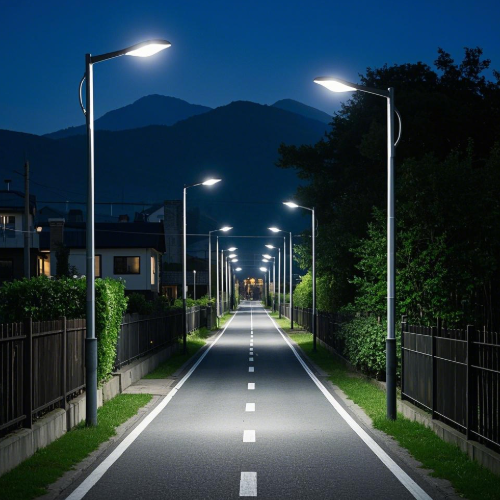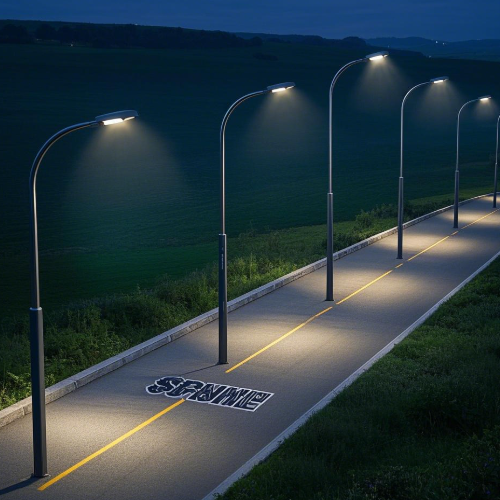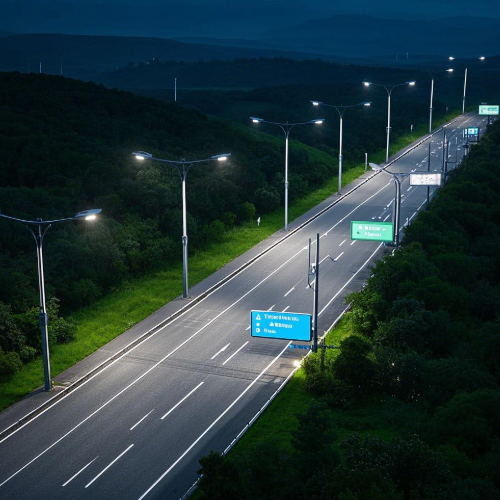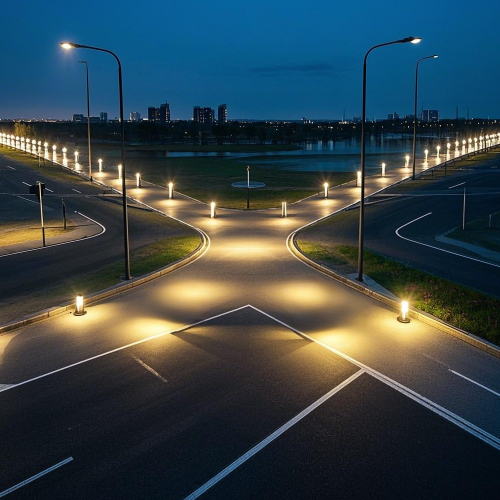Highway lighting plays a crucial role in ensuring road safety, reducing accidents, and enhancing the overall driving experience. As solar technology advances, the use of split solar street lights has become a popular solution for highway lighting due to their energy efficiency, environmental benefits, and cost-effectiveness. However, not all solar street lights are created equal, and selecting the right specifications is essential for optimal performance, especially in demanding environments like highways. This research paper delves into the critical specifications that must be considered when choosing a split solar street light for highway applications.
The focus will be on the technical aspects such as lighting distribution, wattage, battery capacity, and other key features that make highway split solar street lights a viable option for long-term use. Additionally, we will explore how these specifications influence the performance, durability, and overall efficiency of the lighting system. For instance, the highway split solar street light is a prime example of how modern technology is being applied to meet the rigorous demands of highway lighting.
Key Specifications for Highway Split Solar Street Lights
1. Lighting Distribution
One of the most critical factors in highway lighting is the distribution of light. The lighting distribution pattern ensures that the light covers the required area effectively without causing glare or dark spots. For highway applications, Type II, III, IV, and V lighting distributions are commonly used. These types of distributions ensure that the light spreads evenly across the road and adjacent areas, providing sufficient illumination for both drivers and pedestrians.
For instance, Type II distribution is ideal for narrow roads, while Type III and IV are better suited for wider roads and highways. Type V distribution, on the other hand, provides a circular light pattern, making it suitable for large open areas like intersections or parking lots near highways. The choice of lighting distribution directly impacts the safety and visibility on highways, making it a crucial specification for split solar street lights.

Type II

Type III

Type IV

Type V
2. Wattage and Luminous Efficacy
Wattage is another essential specification to consider when selecting highway split solar street lights. The wattage determines the power consumption of the light, while luminous efficacy measures how efficiently the light converts electrical power into visible light. For highway applications, the wattage typically ranges from 35W to 69W, depending on the specific requirements of the road.
Higher wattage lights are generally required for highways to ensure adequate illumination over long distances. However, it is equally important to consider the luminous efficacy, as higher efficacy means more light output for the same amount of power. This is particularly important for solar-powered lights, where energy efficiency is paramount. For example, a highway split solar street light with high luminous efficacy will provide better illumination while consuming less energy, thereby extending the battery life and reducing maintenance costs.
3. Battery Capacity and Autonomy
The battery is the heart of any solar-powered lighting system, and its capacity determines how long the light can operate without sunlight. For highway split solar street lights, battery capacity is a critical specification, as highways require continuous lighting throughout the night. The autonomy of the system, which refers to the number of days the light can function without sunlight, is directly related to the battery capacity.
In areas with unpredictable weather or long periods of low sunlight, a larger battery capacity is essential to ensure uninterrupted operation. Lithium-ion batteries are commonly used in modern solar street lights due to their high energy density, long lifespan, and low maintenance requirements. For highway applications, a battery capacity of at least 100Ah is recommended to provide sufficient autonomy and ensure reliable performance even during cloudy days.
4. Solar Panel Efficiency
The efficiency of the solar panel is another crucial factor that influences the performance of highway split solar street lights. Solar panel efficiency refers to the percentage of sunlight that the panel can convert into usable electricity. Higher efficiency panels generate more power, allowing the system to charge the battery faster and operate for longer periods.
For highway applications, monocrystalline solar panels are often preferred due to their higher efficiency compared to polycrystalline panels. A solar panel efficiency of at least 18% is recommended for highway split solar street lights to ensure optimal performance, especially in areas with limited sunlight. Additionally, the size and orientation of the solar panel should be carefully considered to maximize energy generation throughout the day.
5. Durability and Weather Resistance
Highways are exposed to harsh environmental conditions, including extreme temperatures, heavy rainfall, and strong winds. Therefore, the durability and weather resistance of split solar street lights are essential specifications to ensure long-term performance. The materials used in the construction of the light, such as the pole, housing, and solar panel, must be able to withstand these conditions without degrading.
Aluminum and stainless steel are commonly used for the poles and housing due to their corrosion resistance and strength. Additionally, the lights should have an IP65 or higher rating to ensure protection against dust and water ingress. This level of durability is particularly important for highway split solar street lights, as they are often installed in remote locations where maintenance is difficult and costly.
6. Control Systems and Smart Features
Modern highway split solar street lights often come equipped with advanced control systems and smart features to enhance their performance and efficiency. These systems allow for remote monitoring, automatic dimming, and adaptive lighting based on traffic conditions. For example, motion sensors can be used to increase the brightness of the light when vehicles are detected, reducing energy consumption during periods of low traffic.
Additionally, smart control systems can provide real-time data on the performance of the lighting system, allowing for proactive maintenance and troubleshooting. This is particularly beneficial for highway applications, where ensuring the continuous operation of the lights is critical for safety. The integration of smart features can significantly improve the efficiency and reliability of highway split solar street lights.
Conclusion
In conclusion, selecting the right specifications for highway split solar street lights is essential for ensuring optimal performance, durability, and energy efficiency. Key factors such as lighting distribution, wattage, battery capacity, solar panel efficiency, and durability must be carefully considered to meet the specific requirements of highway lighting. Additionally, the integration of smart control systems can further enhance the efficiency and reliability of the lighting system.
By understanding these critical specifications, decision-makers can make informed choices when selecting split solar street lights for highway applications, ensuring long-term benefits in terms of safety, cost savings, and environmental sustainability. With advancements in solar technology, highway split solar street lights are poised to become a standard solution for road lighting worldwide.
















